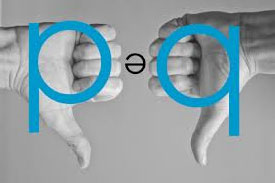So many of our students have problems telling “b” from “d”, but the commonly used “checking the bed” may not be the best way to remediate the problem.
There are several reasons I don’t like this approach:
- students have to stop sounding out the word they are reading and look down at their hands to form thumbs and fingers into the shape of a bed
- they must stop to think about which of their hands match the printed page, then sound out the word “bed” to figure out which one it is, then translate that back to the word they are reading
- it’s very confusing if the printed letter d is at the beginning of the word, or the letter b is at the end when the “bed” they are looking at with their hands is the other way around
- while sounding out the word “bed”, they’ve lost everything they’ve already sounded out in the printed word, and may get confused by the vowel sound they just said in bed vs. the vowel sound in their word
- what happens if there is more than one b or d in the word?!
So what’s an alternative? Have your students learn how to use their lips and tongue to guide them to the correct sound. Here’s how it works:
- Show your student how in the letter b they “run into” a straight line first.
- Have them press their lips together to make a matching straight line.
- Once their lips are together, they are almost done saying /b/. Ask them which sound they think they are getting ready to say.
- Show your student how in the letter d they “run into” the circle first.
- Have them use their tongues to make a matching circle. Their lips will not be touching.
- You can’t say /b/ if your lips aren’t touching! So when you are using your tongue, you’re almost to /d/.
Students can use this method to process the b’s and d’s as they come across them while reading, without losing their place, without sounding out a different word, and without having to juggle everything in working memory to puzzle out which it is.
It still takes lots of practice and drilling to get students into the habit of doing this, but I’ve had great success with the students I’ve used this with.
Bonus: Once you learn how to do it, this makes reading b’s and d’s upside down that much easier for you too!
This is not my original idea, I saw it in an article at OnTrack Reading, where the author cites the source as Romalda Spalding’s The Writing Road to Reading.

